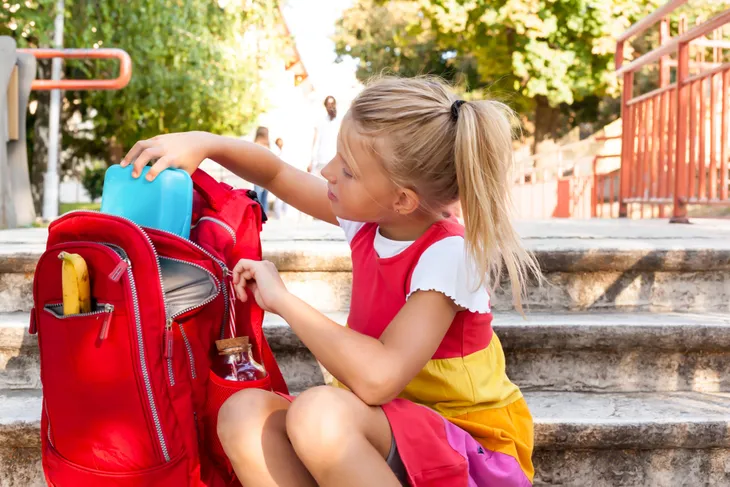When it comes to back to school, your kids shouldn’t have to carry the world on their shoulders, figuratively and literally. That means the backpack you choose for them should be made for their size and carrying capacity, to avoid injury and other mishaps.
When you’re shopping for a backpack for your child, remember that bigger isn’t always better. But it’s more than size that matters—there are other things to keep in mind when slinging a pack through the halls. Here are six tips for backpack safety for back to school time…
Don’t Put All Books in One Backpack
Your child probably has a number of textbooks and other materials they need for all of their classes, and they might feel compelled to keep it all in their pack for convenience. Because the back and torso contain the strongest muscles in the body, your child may not feel the strain it’s causing them.
Encourage your child to only carry around the books they need for their next class, and take advantage of their locker—that’s what it’s there for. Sure, they’ll have to walk a few extra steps between classes, but the walking will also do them good. Also, they won’t have a backpack that potentially starts to rip from being overloaded.
Learn to Turn
Big backpacks also mean more space is required, and your child might not know how much room they’re taking up when they have a heavy pack on their back, notes KidsHealth.org. This can be a problem when turning in tight spaces, as they might hit someone.
Having a lighter pack will require less turning space, which is especially helpful in situations such as navigating the aisles of a school bus. Not only will a thinner pack mean less chance of taking someone out, it will also reduce the chance of accidentally knocking over that beaker of sulfuric acid in chemistry class…
Two Straps are Better than One
Many kids opt to do the “one strap” shoulder carry because… well, we’re not sure—maybe it looks cooler? (This entire Slate.com article is about whether using one strap or both straps on a backpack is cooler.) It’s expected that the “dominance of two-strapping” will continue until 2027, according to the source.
Image aside, using two straps is better for your kid’s body. As you might imagine, using only one strap on a backpack that has two will unevenly distribute the weight to one side of their body. Even backpacks that are designed with only one strap can have the same problem.
Avoid Cutting-Edge Straps
Again, for reasons that may relate to perceived coolness, some kids prefer backpacks that have thin straps. This can end up digging into their skin over time if they’re carrying a full load (which should never exceed 25-pounds, sources say).
LifeHacker.com said that you should avoid the thin straps and go for wide ones that have some cushion, to better distribute the burden across the torso and shoulders. “If you have a choice, strive for large and plush,” notes the source. If your child is hiding red lines across their body from straps that are too thin, that would be a pretty obvious sign to make a switch.
Get a Backpack with Compartments
A backpack that has pre-divided spaces inside (or adjustable dividers) can help your child properly distribute weight across the bag, so it doesn’t all lump into one place. It also helps them organize the contents of their bags into textbooks, writing utensils, and so on.
Another advantage of this is the ability to put objects such as rulers or protractors in their places inside the bag, without having them protruding from the pack and posing a hazard. Pockets on the outside of the bag can also be handy for these kinds of tools.
Size Up the Situation
Not only should the pack not be too heavy, it should also be sized for your child. You’ve probably seen that kid whose backpack is almost dragging the ground as they walk upright? That’s not a good model to follow. The reason we see this kind of thing is probably due to parents buying bigger to save money down the road when their child grows, notes ThurstonTalk.com.
The source notes the pack should not be wider or longer than the torso, and not extend more than 4-inches below the waist. Backpacks that are too large cause your child to lean forward to compensate, which can cause their little backs to ache over time.









